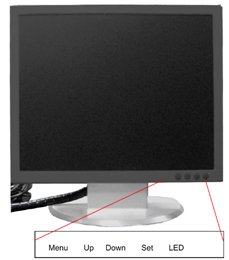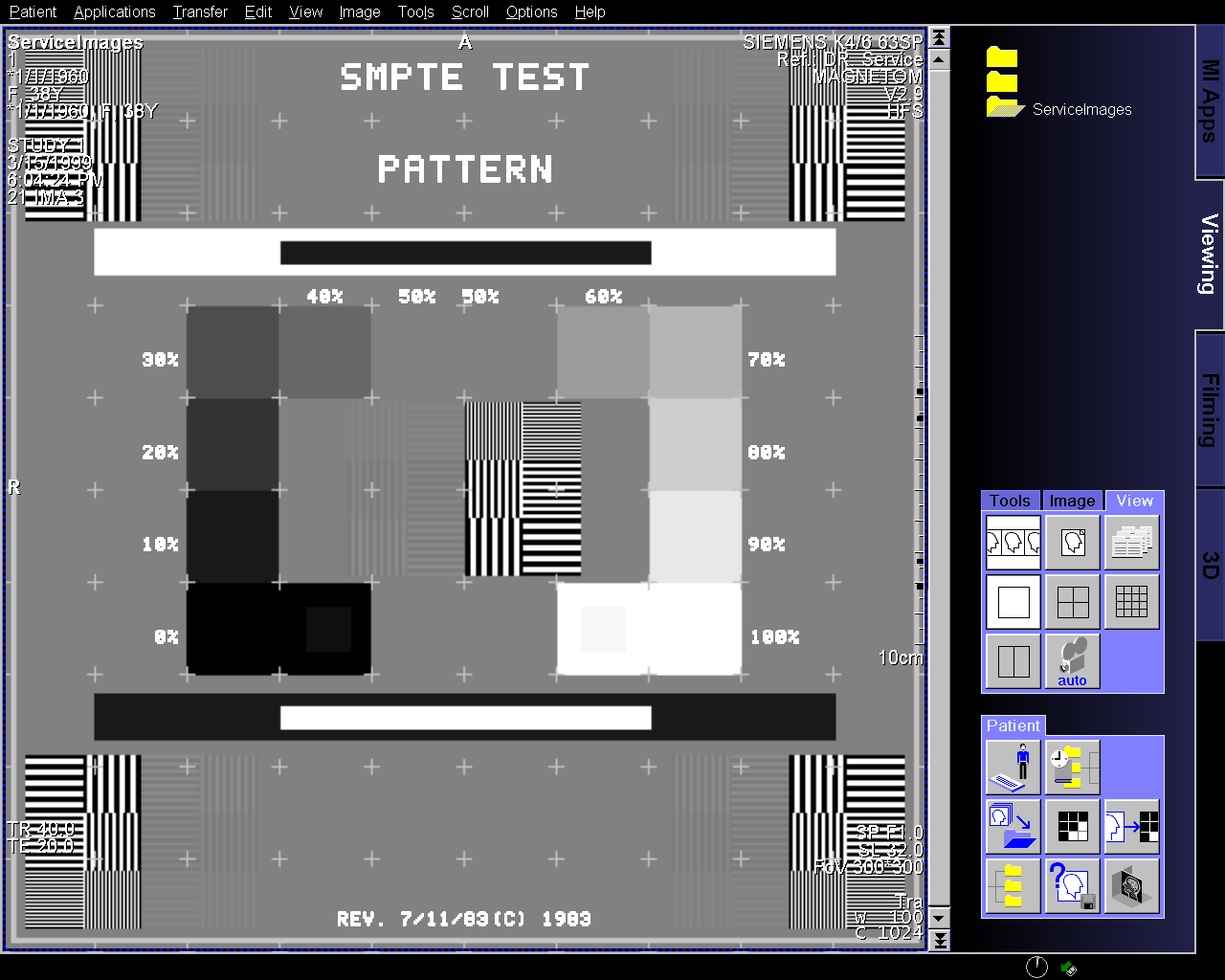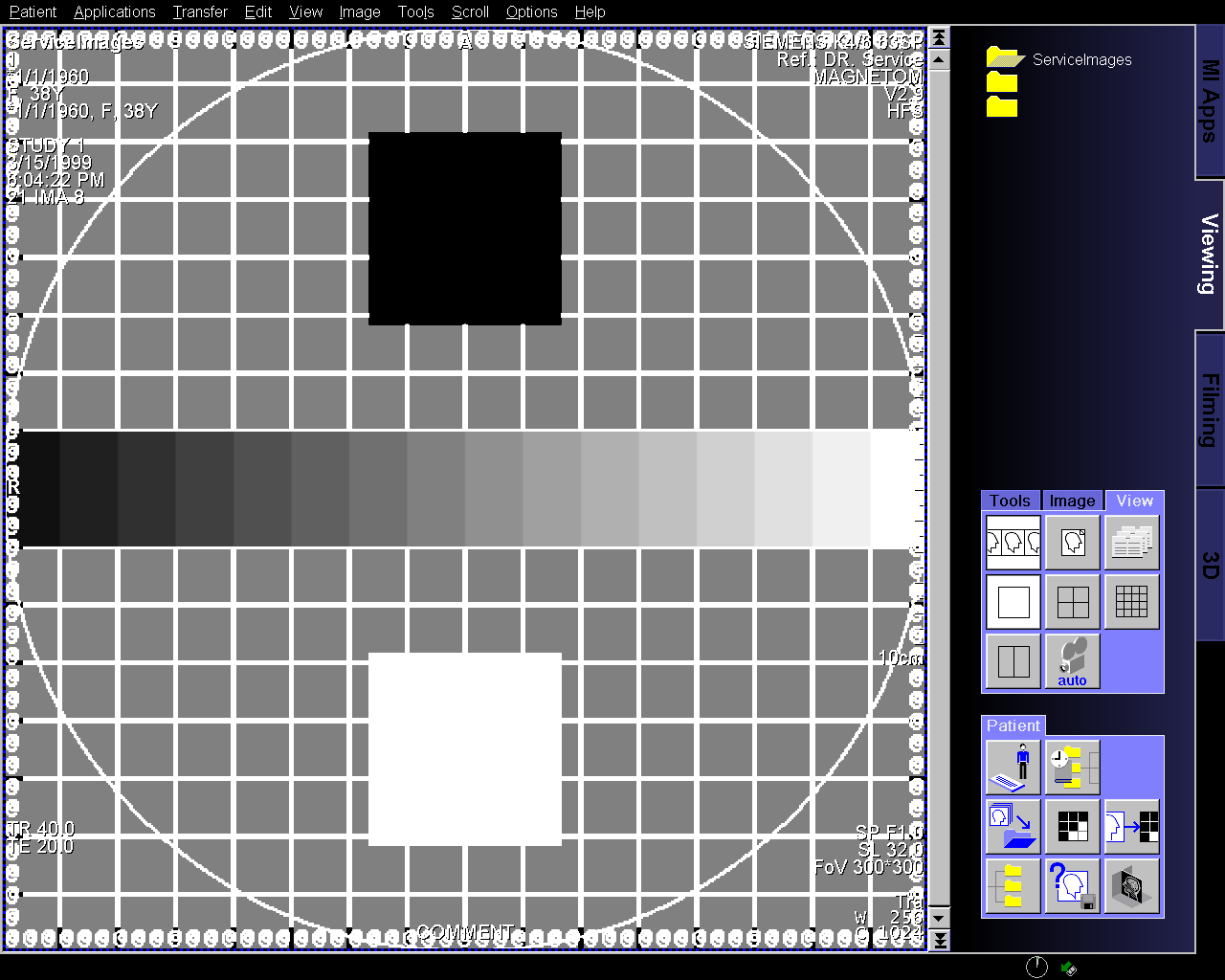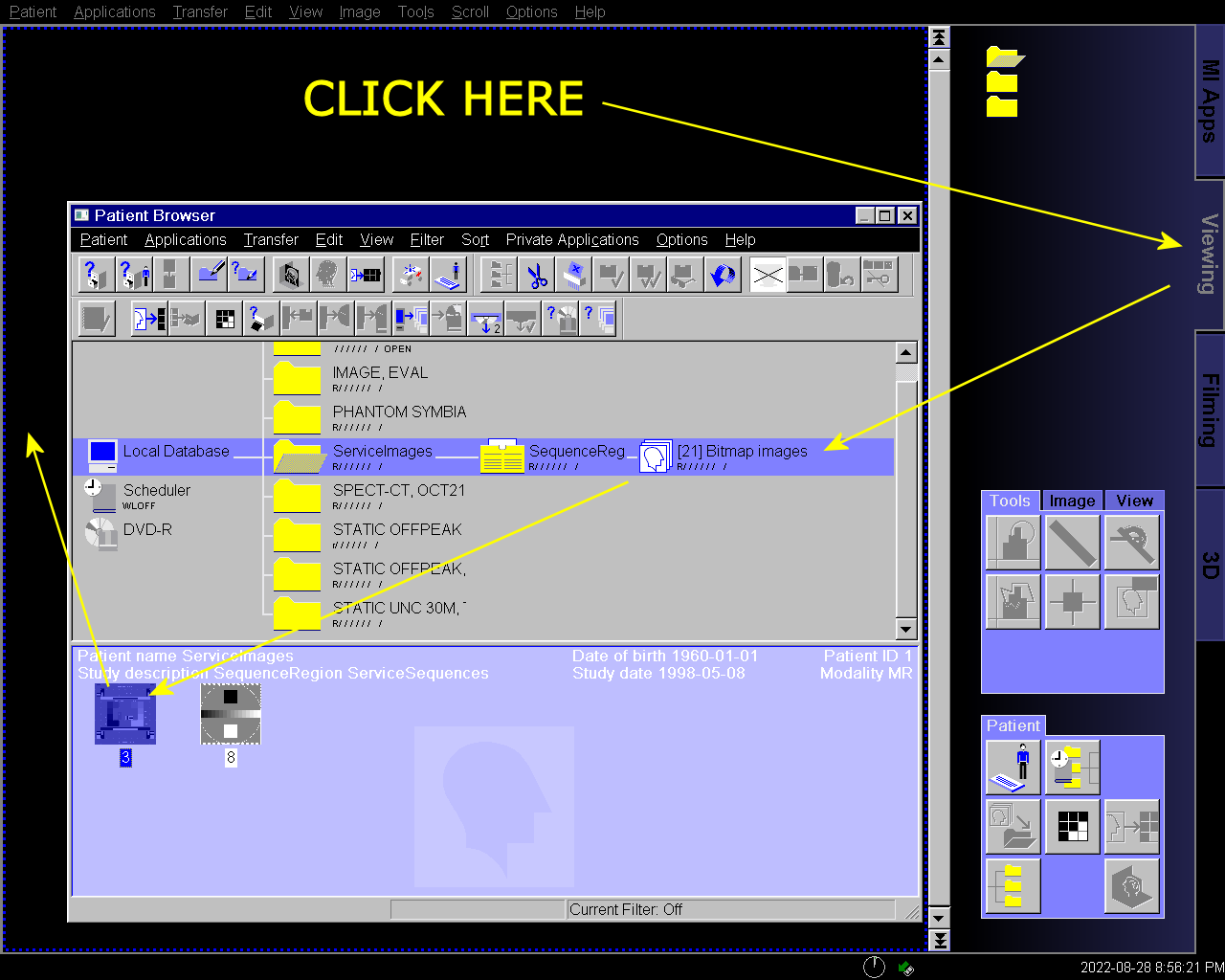Tom in Tech Support Tidbit:
To adjust display settings on a Siemens DSC1910-D or DSC1913-D monitor, you'll need to unlock the onscreen display.
There are four buttons and an LED on front of the monitor.

To unlock the onscreen display...
[1] Press MENU (the leftmost button). The screen will indicate OSD is locked.
[2] Press and release the SET button (the rightmost button) one time and then quickly press the UP button three times. The screen should now indicate OSD is unlocked.
If adjusting an EIZO S1934 monitor, select the DICOM color mode using the monitor's front panel as shown below. Be advised an EIZO S1933 monitor does not have a DICOM color mode selection.

SMPTE and SIMFIT patterns are used to calibrate MI-SPECT monitors. The SMPTE pattern is used to adjust the monitor visually, while the SIMFIT pattern is used to set the black and white levels (0% and 100%) using a luminance meter.
CCAM NOTES: CCAM acquisition workstations do not display DICOM images; therefore use MS Paint to display SMPTE patterns on a CCAM.
[*] The video resolution on a CCAM laptop is 1024 x 768.
Click here to download a 1600 x 1200 SMPTE bitmap > SMPTE Pattern
[*} The video resolution on a CCAM desktop PC is 1920 x 1080.
Click here to download a 1920 x 1080 SMPTE png > SMPTE Pattern

Right-click on the link shown below and select Save Link As to download the SMPTE pattern.
SMPTE.dcm
Be advised that on a Siemens Symbia-T or a Siemens Symbia Intevo, the SMPTE pattern may already exist on the ICS workstation, but it needs to be imported to the Local Database as follows:
Open the syngo Patient Browser and select Transfer > Import from Offline on the menu bar.
Use the dropdown menu to select H:\SiteData\ReferenceImages.
Select ImageQualityTest_Tech_3.IMA.
Click OK.

Right-click on the link shown below and select Save Link As to download the SIMFIT pattern.
SIMFIT.dcm
Be advised that on a Siemens Symbia-T or a Siemens Symbia Intevo, the SIMFIT pattern may already exist on the ICS workstation, but it needs to be imported to the Local Database as follows:
Open the syngo Patient Browser and select Transfer > Import from Offline on the menu bar.
Use the dropdown menu to select H:\SiteData\ReferenceImages.
Select ImageQualityTest_Tech_1.IMA.
Click OK.
After downloading the patterns from this website, save them to the root directory of a USB Jump Drive.
NOTE: Google Chrome may rename the SMPTE pattern to Unconfirmed 975687.crdownload. If that happens, then rename the file to SPMTE.dcm.
NOTE: Google Chrome may rename the SIMFIT pattern to Unconfirmed 2259.crdownload. If that happens, then rename the file to SIMFIT.dcm.
Afterwards, insert the Jump Drive into your Siemens MI-SPECT workstation.
Open the syngo Patient Browser and select Transfer > Import from Offline on the menu bar. The contents of the root directory on the Jump Drive will appear.
Select both STMPE.dcm and SITFIT.dcm and then click Ok. The bottom of the screen should indicate the files were successfully imported.
In the syngo Patient Browser, refresh the Local Database and the patterns will appear under either...
-
Image Quality Test (if the images were already on the system) or
-
ServiceImages (if the images were downloaded from this website)
Click on the Viewing tab and then drag and drop one of the patterns to the display field.
NOTE: The patterns are not MI-SPECT images; and therefore, they will not display properly using a MI-SPECT workflow.

If using a Siemens DSC 1913-D monitor, then on the SIMFIT pattern, use a SMfit Spotmeter (Siemens Tool & Test part number 7752848) to adjust the monitor's settings until:
-
-
The large white square is 137 cd/m2 (+/- 7)
-
The large black square is 0.45 cd/m2 (+/- 0.15)
-
If using an EIZO S1933 or S1934 monitor, perform visual adjustments only.
On the SMPTE pattern, the grey scale is shown as a series of squares that range from black (0%) to white (100%), which is why the image must be viewed with the Window Center at 1024 and the Window Width at 100.
The 0% and 100% squares each contain smaller squares inside them that represent level 5% and 95% respectively. You should be able to visually differentiate each of the two inner squares from the larger squares that contain them.
The brightness and contrast of your monitor are adequately set if the 5% and 95% inner squares are visible.
Disclaimer: This is not an official Siemens Healthineers website.
All comments, recommendations and suggestions are the personal opinion of Tom in Tech Support.